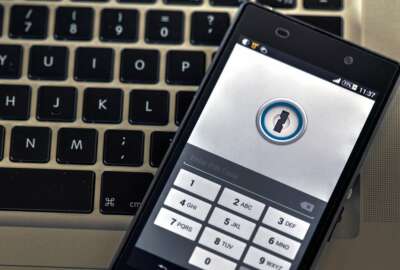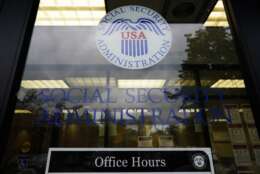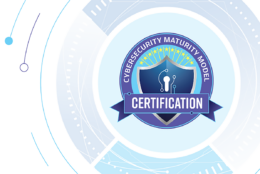
Increasing threats against mobile devices force HHS, others to rethink protections
The Department of Health and Human Services now requires executives traveling anywhere overseas to take a loaner device and connect through a secure tunnel.
The first time the intelligence community issued public warning to government and industry executives traveling overseas came before the 2008 Summer Olympics in Beijing.
Joel Brenner, then the head of U.S. Counter Intelligence in the Office of the Director of National Intelligence and a former National Security Agency inspector general, said taking your phone, laptop or other device to China was dangerous and would end up with lost data and the real possibility of having your home network compromised.
“We suggested they take stripped down devices, if you are taking a device at all,” Brenner said in a recent interview with Federal News Network. “That advice was widely adopted by many companies as well as the government. I think it’s good, but tough advice to follow.”
Now, 11 years after that initial warning, the Department of Health and Human Services is taking it a step further. While most agencies prohibit executives taking devices to countries like China or Russia, HHS is not letting officials take any device with government information overseas no matter the country.
HHS Chief Information Security Officer Janet Vogel issued a memo in December addressing the increased level of risk and the need to safeguard government furnished equipment (GFE) while on foreign travel.
“Two key components of the memo are that while abroad, HHS employees must use loaner GFEs containing no sensitive information. Employees are also required to connect to secure, password-protected Wi-Fi, as well as a virtual private network (VPN) when accessing HHS resources with their loaner GFE,” Vogel told FNN in an email. “Increasing the strictness of our GFE procedure for travel was necessary to minimize the risk of increasing and new security threats. HHS has a global presence and often has representatives deployed around the world for reasons such as health conferences, responses to pandemics, etc. This approach to GFE use helps to ensure that the assets and data that travel around the globe are appropriately protected. By requiring HHS employees to use loaner GFE that do not contain sensitive information, the damage resulting from a cybersecurity incident would be lessened. Additionally, requiring secure Wi-Fi combined with a VPN, makes exploitation of GFE more difficult. Limiting the amount of exploitable information on a device, as well as decreasing the chance for such an exploitation, is an effective method of risk reduction for HHS.”
HHS detailed six basic rules to follow:
- Only loaner GFE encrypted devices are allowed on foreign travel.
- Devices received from foreign nationals/governments (i.e., conferences, gifts, etc.), and devices purchased while on travel are not permitted to conduct HHS business.
- Secure remote access via Virtual Private Networks (VPN) is required.
- No sensitive data (e.g. personally identifiable information [PII], protected health information [PHI], HHS intellectual property, etc.) are permitted on loaner GFE, unless the devices are encrypted.
- All GFE devices used while on foreign travel must remain powered off during travel to and from foreign countries, segregated from HHS networks/systems, and submitted to the IT Helpdesk immediately upon return for evaluation and sanitization.
- All devices must be sanitized upon return and before re-use.
This means whether an HHS executive goes to China or Germany or Canada, the device and information on it are considered at-risk.
HHS is ahead of the curve
One federal cyber executive, who requested anonymity in order to speak about their agency’s security requirements, said the HHS policy is one of the strictest in government.
Related Stories
The federal cyber executive added that in some ways HHS is solving a people problem with technology instead of the other way around.
“People are lazy. It’s as simple as that, and if it gets complicated people don’t want to deal with it. This is why a technology-first approach makes sense,” the executive said.
Brenner, who now teaches at the Massachusetts Institute of Technology and and runs his own consulting and law practice, said it’s more than people are lazy, it’s a lack of understanding especially by executives.
“They don’t want to deal with the aggravation and having to take special steps before they go and when they get back,” he said.
Agencies are beginning to recognize the need to better secure mobile devices. Symantec reported in 2018 that new mobile malware types jumped 54 percent from 2016 to 2017
Vincent Sirtipan, a portfolio manager in the physical and cybersecurity division in Office of Mission and Capability Support in the Department of Homeland Security’s Science and Technology Directorate, said agencies have focused for a long time on mobile device management (MDM) software to protect their devices. But that is only one piece of the bigger puzzle.
“It has to be a MDM and other technology that enable security whether that’s identity management or mobile application vetting or a mobile threat defense solution,” he said. “When you are talking about mobile phones, we are still maturing as an enterprise as is the entire market. What controls and capabilities do we need on a mobile phone to secure it? We recognize it poses a broader threat landscape and a broader attack surface.”
NIST updating mobile security standards
Sirtipan said DHS recently completed is fifth review under the government cybersecurity architecture review (GovCAR) initiative that looked only at agencies’ mobile infrastructures.
“The review team identified if an employee’s multiple mobile security technologies, including application vetting and identity and access management means agencies have a greater security posture against mobile attacks,” he said. “They looked the attackers’ process and desire to move laterally based on mobile attacks. They are able to identify if agencies employ certain tools, they can see what their security posture looks like, and when they employ a compilation of more mobile security tools they are able to mitigate adversary actions and limit their ability to attack us.”
Latest Technology News
Sirtipan said NIST and others in government are updating SP 800-124, and the draft revision should be out for public comment in the next few months.
“We are looking at things like leveraging the National Information Assurance Protection (NIAP) protection profiles, and talking about picking a device that has been trusted and secured,” he said. “We have rechartered and renamed the federal mobility services category management team and mobile security tiger team to be one federal mobility group. It includes 45 agencies and departments to help move us all toward a better security posture.”
Sirtipan said while adding more technology and standards are helpful, it comes back to the user.
And that takes us full circle to HHS.
Vogel, the HHS CISO, said since cyber threats cross all borders, more needs to be done.
“Cybersecurity threats exist outside of the United States, and United States citizens, especially government employees, are often targeted while traveling abroad. Employees are not allowed to connect to HHS systems or networks using unsecured networks — from internet cafes, coffee shops, etc. — regardless of whether they are in the United States or abroad,” she said. “That said, the United States has strong cybersecurity protections, while safeguarding in other countries may not be as robust. Requiring employees to connect to secure, password-protected networks and use a VPN help strengthen our cybersecurity posture and combat potential threats.”
Copyright © 2024 Federal News Network. All rights reserved. This website is not intended for users located within the European Economic Area.
Jason Miller is executive editor of Federal News Network and directs news coverage on the people, policy and programs of the federal government.
Follow @jmillerWFED









